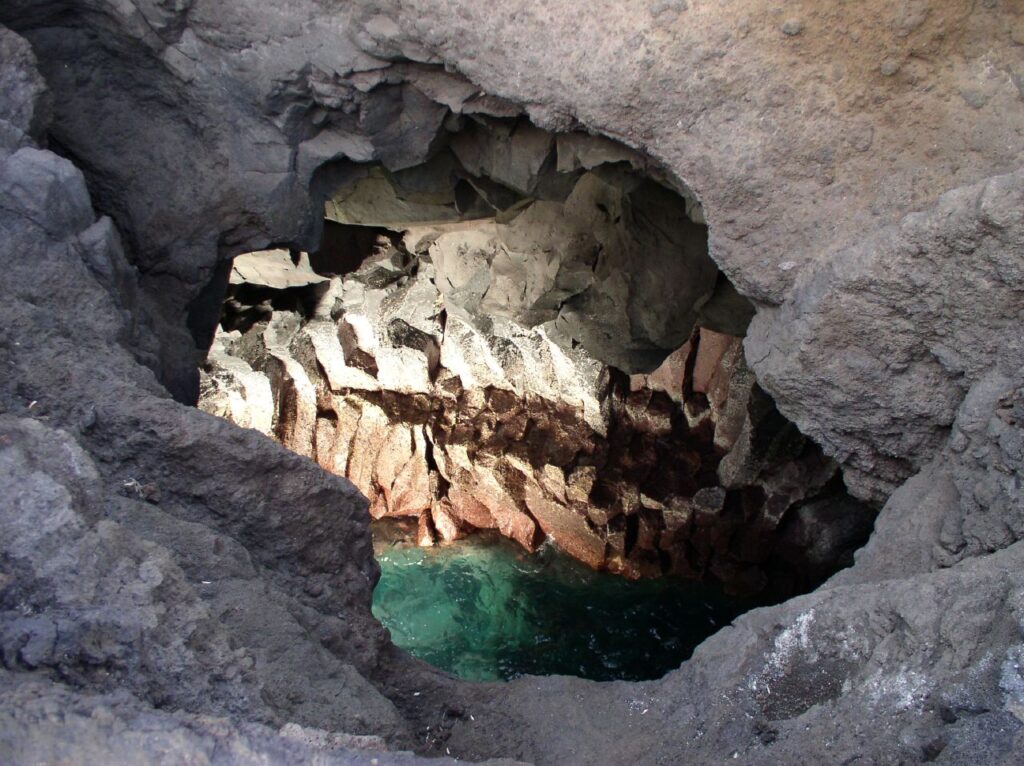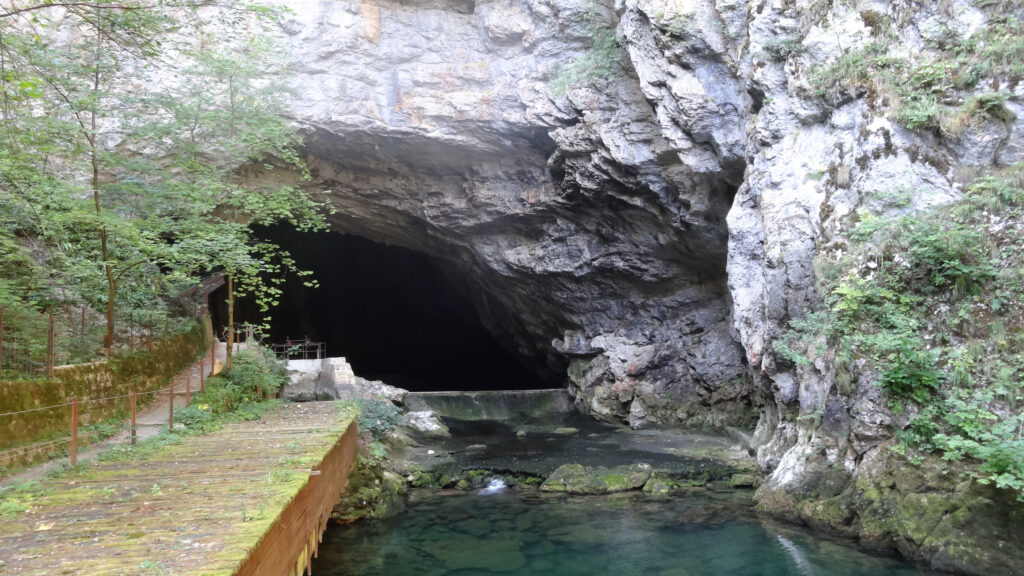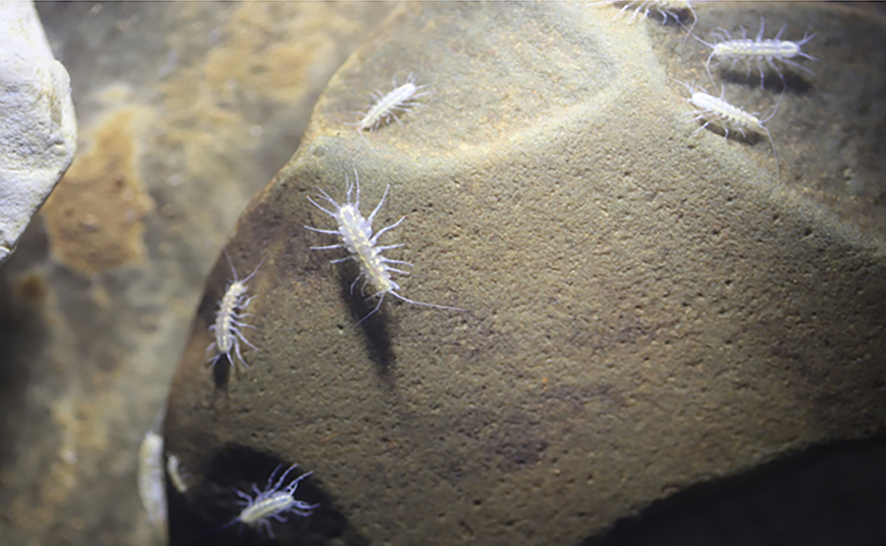Underground ecosystems are everywhere. From gargantuan lightless mazes to pore-sized bedrock gaps inhabited by microfauna — super tiny animals — these ecosystems are believed to be the most widespread nonmarine environments on the planet, according to a 2019 paper in BioScience. Just like the underwater depths, science still knows precious little about this vast kingdom that all of us, unsuspectingly, live above. And much of what we do know is due to a basic human need: water.
Around 99% of the world’s liquid freshwater supply is groundwater: the water held in aquifers and other subterranean spaces. According to the U.N. World Water Development report of 2022, nearly 50% of the world’s urban population currently depends on groundwater, a number that’s likely to rise as the global climate changes.
Given this, some scientists are turning their attention to how rising temperatures might impact underground ecosystems themselves. And for that, they’re using the most accessible doorway we have into the world below: caves.
From 2019 to 2021, a research team visited 12 caves around continental Europe, the Canary Islands, the Azores archipelago and Guam, all situated in different climate zones, to compare cave temperatures with their respective surfaces. At each location, the scientists installed two temperature data loggers: one in the sediment in the deepest part of the cave, and another in the outdoor soil directly above the same coordinates. The loggers recorded the temperature every two hours over the course of a full year, gathering more than 100,000 measurements. The researchers’ findings were published last November in Scientific Reports.

First, the data set confirmed a trend observed in past studies done in Mexico, Slovenia and the Czech Republic.
“The temperature inside caves tends to be the average of the outdoor annual temperature,” says Ana Sofia Reboleira, a professor at the University of Lisbon and coordinator of the study. “If the surface average increases, this will be reflected in the depths.”
Underground ecosystems are incredibly stable in temperature compared to their surface counterparts. They mirror average overworld temperatures quite closely, but with very little variation. While the annual average temperature in the Cerâmica cave in Portugal, for example, was almost exactly the same as its surface equivalent — 14.9 and 15° Celsius (58.8 and 59° Fahrenheit), respectively — temperatures within the cave oscillated by only 0.6°C (1.1°F). That’s a stark contrast with the variance of 27.3°C (49.1°F) between the highest and lowest temperatures registered outside.
Scientists recorded the largest variation in cave temperatures — 8.8°C (15.8°F) — in Balcões, in the Azores. Meanwhile, temperatures in the Planinska cave, in Slovenia, varied by only 0.1°C (0.2°F) over the entire year.
But researchers were surprised by the ways in which the caves responded to changing temperatures on the surface.
Some of the caves followed outside temperatures throughout the year without any delay. Others seemed to lag behind a bit, reflecting the overworld temperature as it were in the previous one to four months. A certain amount of asynchronism between underground and aboveground environments is expected due to physical factors such as the thermal inertia of rock, i.e. the time it takes heat on the hotter upper surface to pass through the earth to the cooler underground rock. But a third group of caves was so out of sync they became an inverse thermal image of the surface: they were warmest when the world outside was at its coldest, and vice versa.
These different patterns indicate that despite the overall correlation between annual average temperatures above and below the ground, the individual characteristics of each cave — depth, shape, size, the type of rock, air and water circulation and so on — influence how underground temperatures behave throughout the year.

Researchers were also surprised to find that some of the caves — particularly the ones that follow surface temperatures without delay — actually showed daily thermal cycles. Scientists had only observed this phenomenon before in the shallow sections of tropical caves.
Circadian rhythms, the physical and behavioral changes many living things experience over a day-night cycle, regulate several aspects of the lives of surface organisms. Until recently, scientists assumed that underground ecosystems lacked the kind of environmental input, like sunlight, that could trigger such changes in subterranean critters. According to the study, “however, the observed daily thermal cycles could play an important role to mark the circadian rhythms in cave-adapted organisms.”
Not only are these findings important to our understanding of underground ecosystems, but they also reinforce worries about the potential consequences of climate change.
“The temperature increase will be reflected in an increase in the average temperature of the aquifers in each area,” Reboleira says.
Increasing groundwater temperatures can have a devastating effect on stygofauna, the odd assortment of small critters adapted to live in underground watery habitats. These little animals are mostly represented by crustaceans and insects, but also include worms, nematodes and mollusks. All, thanks to millennia of evolution, share a similar set of strange traits — at least strange to us surface dwellers.
The absence of light has left most of these creatures blind and without any pigmentation. Their bodies and appendages have become elongated, and their sensory organs larger since they “see” by feel. The scarcity of resources underground has also left its mark: These animals tend to have low metabolic rates, fewer offspring, and longer lives.
A rich array of microbial life also lives in groundwater. They are, together with stygobites (as the members of stygofauna are called), responsible for processes that ensure water quality, like the decomposition of particulate organic matter, the cleaning of rock pores and the maintenance of the hydraulic properties of aquifers through their movement and burrowing.
“Subterranean water animals live in very stable environments with low thermal amplitude and are adapted to these conditions, having little ecological plasticity to adapt to change,” Reboleira says. “Therefore, the effects of temperature rise on these ecosystems are unpredictable. However, recent studies show us that these organisms are already very close to the maximum temperatures they tolerate. In the context of temperature increase, this could jeopardize their survival.”

Not many studies, so far, have tested the resilience of stygobites to rising temperatures, and the ones that have show different results for different species. The crustacean species Niphargus rhenorhodanensis and Proasellus valdensi, for instance, have survived a wide range of temperatures in laboratory studies. Two other species in the genus Proasellus, however, were shown to be stenothermic: extremely sensitive to temperature changes, in this case, as modest as 2°C (3.6°F).
In 2022, Reboleira authored another study alongside Tiziana Di Lorenzo, a researcher from the Italian National Research Council, testing the response of yet another species of Proasellus, P. lusitanicus, endemic to a single aquifer in Portugal, to variations in temperature. Again, they found the species quite sensitive to mild thermal changes in its environment, with some adults dying after a heating of 2.5°C (4.5°F).
In light of previous research projecting temperature rises of 3-5°C (5.4-9°F) in shallow groundwaters worldwide due to climate change and urbanization, the scientists write that their “results suggest that if the worst global warming scenario is met in the next century, P. lusitanicus will likely go extinct.”
If groundwater temperatures rise in tandem with those from the surface world, many more stygofauna species may face extinction. This is especially concerning when we consider the monumental ecological function these small, nearly invisible lifeforms carry out. As Di Lorenzo and Reboleira write, “stygobitic crustaceans are key species for the groundwater ecosystem, and their extinction threatens the entire ecosystem services, which are vital for all life on Earth.”
Mongabay is a U.S.-based nonprofit conservation and environmental science news platform. This piece was originally published at https://news.mongabay.com/2024/03/rising-temperatures-threaten-the-tiny-animals-responsible-for-groundwater-quality/.
Sign up for The Invading Sea newsletter by visiting here. If you are interested in submitting an opinion piece to The Invading Sea, email Editor Nathan Crabbe at ncrabbe@fau.edu.


